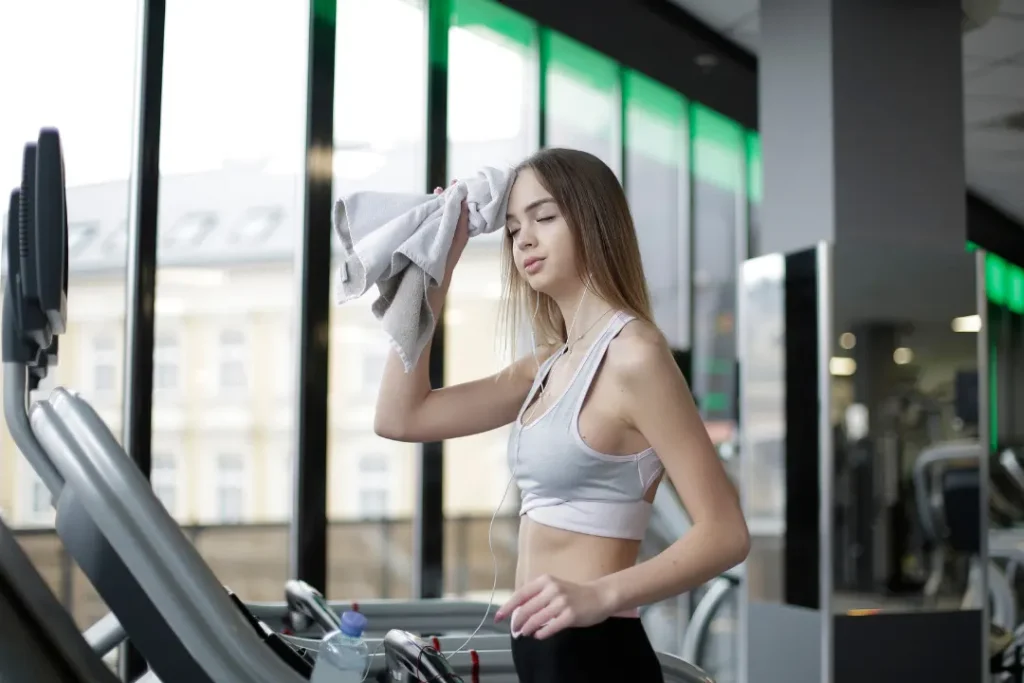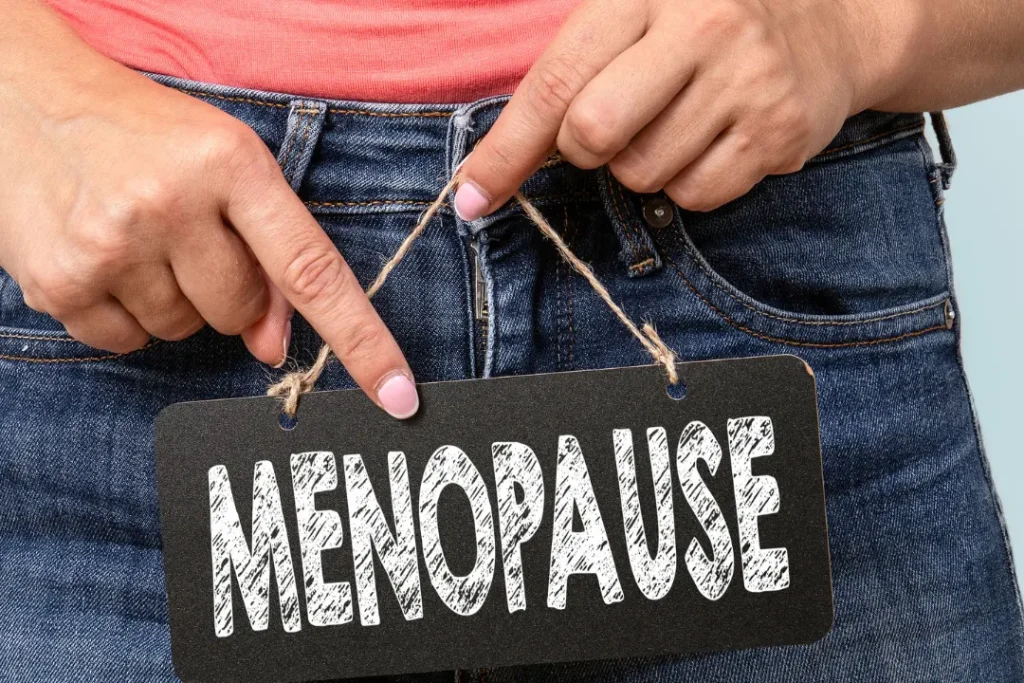Excess iron can cause collagen and elastin degradation, leading to wrinkles, sagging skin, and other signs of aging. Find out how you can combat excess iron and reclaim your healthy, youthful skin today.
“It is possible to have too much of a good thing.”
— Aesop
The old saying, “too much of a good thing,” may have originated from the Greek storyteller Aesop (c. 620–564 BCE). This phrase, repeated throughout the centuries, warns that even things that are good for you can work against you when quantity exceeds need; this is undoubtedly the case regarding excess iron stored in your body.
You May Also Like:
Peri Menopause and Hair Loss: Exploring the Connection
The Best Pre Workout for Women Compared: Alani Nu Pre-Workout vs Frog Fuel Ultra…
Excess Iron is the #1 Factor Behind Aging Skin in Menopausal Women – Here’s What To Do is an original (HerHealthWatch) article.
Enough iron vs. excess iron
Iron is essential for your health and crucial to many bodily functions. It aids in the production of red blood cells and DNA, and it’s indispensable for metabolic processes. The National Institutes of Health provides general guidelines for daily iron requirements but cautions that how much you need is individualized and depends on many factors, such as:
- Age: Infants and toddlers need more iron than other children because they are growing rapidly. Similarly, teenagers need more iron to support their rapid growth and development.
- Gender: Men and postmenopausal women generally need less iron than others. In healthy men, blood stores remain relatively consistent since they don’t lose blood in the volumes that females do through menstruation or childbirth. Menstruating women lose iron each month during their period, and their iron levels generally rise when menstruation ceases.
- Pregnancy: Pregnant women need significantly more daily iron to support their babies’ growth and development and increase their blood volume.
- Health Conditions: Certain conditions can affect how much iron a person needs. For example, people with celiac or inflammatory bowel disease can have trouble absorbing iron. They may need more iron, while people receiving blood transfusions need less.
- Physical Activity: Athletes and people who do a lot of physical work may need more iron because they lose more through sweat and the breakdown of red blood cells during intense activity.
It’s healthy and normal for your body to store and use the iron you consume from food. However, excess iron in the body could result from a severe medical condition known as “Systemic iron overload” (Hemochromatosis). Hereditary hemochromatosis occurs in people genetically predisposed to store more iron than their bodies use. Secondary hemochromatosis can result from having received multiple blood transfusions, causing iron buildup, among other causes.
Fortunately, not all excess iron stored in your body is enough to cause either of these medical conditions. But, if you’re a woman entering menopause or already postmenopausal, excess iron may be what’s causing your skin to age prematurely.

Excess iron under your skin
It’s possible to have excess iron in your skin without having a systemic iron overload. Since skin assists in excreting iron from the body, it’s not surprising that some iron is left behind. Several conditions can add to iron buildup in your skin, including:
- Aging and Hormonal Changes: As women reach menopause, they stop losing iron through menstruation, leading to an increase in the body’s iron levels, including in the upper layers of the skin.
- Sun Exposure: Research shows that sunlight can increase the level of iron in the skin and the formation of free radicals.
- Diet and Supplements: Consuming a diet high in iron or taking iron supplements can increase the amount of iron in the body, some of which can end up in the skin.
- Topical Products: Some skin care products contain iron or iron oxides, which can increase the iron level in the skin.
Menopause, sunshine, and excess iron – the triple threat that ages skin.
As mentioned, elevated iron levels often occur among postmenopausal women, increasing as much as 42% in the upper layers of the skin. And here’s something you might not have suspected: even if you have a history of low iron levels, you can still have excess iron stored in your skin. To understand how this can happen, you need to know about ferritin.
When you consume iron through your diet, your body immediately uses what it needs. Then, it stores the rest in ferritin, which is found in your blood. This stored iron can be found throughout your body, mainly in your liver, spleen, and bone marrow. When your body needs more iron – for example, to make new red blood cells – it can draw from these storage units.
So far, so good. However, if the amount of iron in your body becomes too high, as it can in menopausal women, the amount of ferritin increases, which can be problematic. When exposed to sunlight, ferritin breaks down and releases stored iron, promoting the formation of hydroxyl radicals. Hydroxyl radicals are the most harmful free radicals that cause oxidative stress and damage our cells. These skin-destroying free radicals can cause dullness, dark spots, fine lines, and wrinkles. Yet, all is not lost; there are ways to combat this triple threat.

Traditional treatments for aging skin.
There are science-backed strategies that can alleviate the appearance of skin damage. Among the more successful treatments are antioxidant-rich skincare products and sun protection.
Antioxidants, like vitamins C and E, Retinol, Resveratrol, and Niacinamide, may neutralize free radicals, preventing them from causing damage. A study published in the Journal of the Brazilian Society of Dermatology found that topical application of antioxidants can significantly reduce signs of aging.
Sun protection is vital to skin restoration. As mentioned, UV radiation from the sun can interact with iron in the skin, triggering skin-destroying free radicals. Regular use of broad-spectrum sunscreen and protective clothing can help prevent this.
Traditional anti-aging treatments primarily focus on reducing free radical damage after the fact; in other words, they’re a bit late to the game. There is a new product that takes an entirely novel approach to anti-aging skin treatment by stopping the creation of free radicals before they can begin their destructive work. How? By removing excess iron from the upper layers of your skin – the playground where free radical damage begins.

i-On Skincare – eradicates excess iron
i-On Age Disrupting Skin Emulsion with DII® Technology removes excess iron from the skin, using vitamin C and naturally sourced pearl powder as reducing and clearing agents, releasing and neutralizing it. This process effectively removes iron from the skin’s surface before it reacts to sunlight, preventing the formation of free radicals and stopping oxidation before it has a chance to start. This product is also packed with natural ingredients to improve skin health, including green tea extract, known for its antioxidant properties, and niacinamide, which enhances skin texture and tone.
Behind this groundbreaking product is Dr. Xi Huang, Founder and CEO of i-On Skincare and a scientist passionate about studying iron’s effects on the skin. Joe Gubernick, formerly chief marketing officer of Estée Lauder, a scientist and lead researcher for i-On, said that DII technology is “the most significant discovery since retinols in the 1980s.”

Don’t let excess iron stay under your skin.
Skincare is more than just a beauty routine; it’s a commitment to understanding and caring for our skin at a deeper level. Sometimes, that means looking beyond the surface or, in this case, under the surface and delving into the science of skin health. By understanding the role of iron in skin aging and taking steps to control its levels, we can pave the way to healthier, younger-looking skin.
For further research:
PUBMED – Menopause increases the iron storage protein ferritin in skin
Aging Journal – Iron: an underrated factor in aging
Katie Couric Media – How Iron Levels Can Impact the Aging of Your Skin
VeryWell Health – Blood Iron Levels May Be Key to Healthy Aging
Medical News Today – Too much iron may cause skin infections
Important Note: The information contained in this article is for general informational purposes only, and should not be construed as health or medical advice, nor is it intended to diagnose, prevent, treat, or cure any disease or health condition. Before embarking on any diet, fitness regimen, or program of nutritional supplementation, it is advisable to consult your healthcare professional in order to determine its safety and probable efficacy in terms of your individual state of health.
Regarding Nutritional Supplements Or Other Non-Prescription Health Products: If any nutritional supplements or other non-prescription health products are mentioned in the foregoing article, any claims or statements made about them have not been evaluated by the U.S. Food and Drug Administration, and such nutritional supplements or other health products are not intended to diagnose, treat, cure, or prevent any disease.


